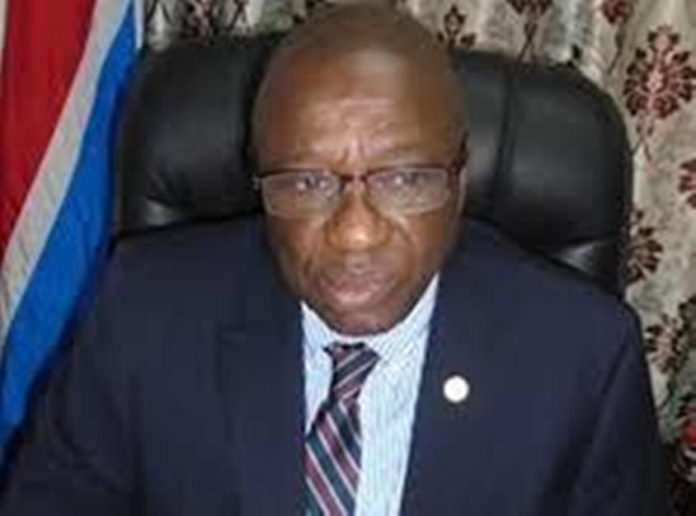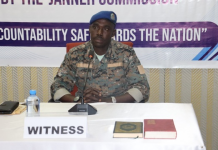By Awa B. Bah
The Minister for Transport, Works and Infrastructure Bai Lamin Jobe, on Wednesday June 12th 2019 appeared before deputies at the National Assembly to orally respond to questions raised by NAMs on issues related to his Ministry.
The Minister was asked to shed light on when road rehabilitation will take place within KM, and on his Ministry’s plans in involving the Ward Development Committees in the planning and implementation process so that community social auditing could be conducted at each stage, to ensure value for money.
Minister Jobe in his response to Members said some of the roads mentioned are part of the 50 kilometres of urban roads earmarked for construction under the OIC portfolio; that feasibility studies have been conducted for the expansion of the Bertil Harding highway between Stink corner and Brikama, and that advanced negotiations are underway to build a four lane by-pass road from Stink corner to Abuko, along the swamps at the back of Jeshwang. This he said together with the upgrading of the Bertil Harding highway will decongest significantly the Banjul/Brikama highway.
Jobe said the Ministry has plans and is actively engaged in sourcing for funds to generally upgrade the urban road networks covering KM and the West Coast region; that these two areas are rapidly growing in population as opposed to the regions. He said it is the intention of his Ministry to create alternative routes for the current main roads and provide better internal circulation routes within the various urban communities; that this initiative will include specific packing areas to bring clarity on the issue of fares charged between origin and destination of travel routes. A list of roads suggested by NAMs for his Ministry he said, will be subjected to technical evaluation to determine the most effective routes in terms of connectivity and reduction in time of travel.
He informed Members that his Ministry has concluded a traffic survey at various points within the KM and WC Region for a 24 hour period over seven days on traffic flow; that this will guide their program as their studies has already shown the hierarchy in traffic flow from the main trunk road, to the secondary and tertiary roads as well as the points of heaviest traffic flows and points of congestions.
The Minister said the outcome of the planning will be shared with local authorities, associations, unions of transporters as well as community development committees; that they consider this process particularly important because it serves to validate their technical studies and to sensitize communities more about their affected properties and means of compensation which is available.
Jobe said his Ministry intends to address roads across regions on the basis of the Rural Accessibility Index (RAI) standards. This he said is based on the percentage of the number of people living within two kilometers of an all-weather motorable road; that studies have shown that they need about 1, 000 kilometers to reach this goal. The NRA he said, is engaged in mapping out and assessing their regional roads by regions to attain the above noted standards.
On the mechanisms to ensure that there is a proper transport policy to cater for passengers plying Banjul Westfield to Brikama, the Minister responded that they have updated and revised the National Transport Policy of the Gambia, which was adopted by cabinet in 2018 with all stakeholders; that the implementation of the policy is ongoing, and that specific strategies to improve road passenger transport especially within the urban areas are in place.




















